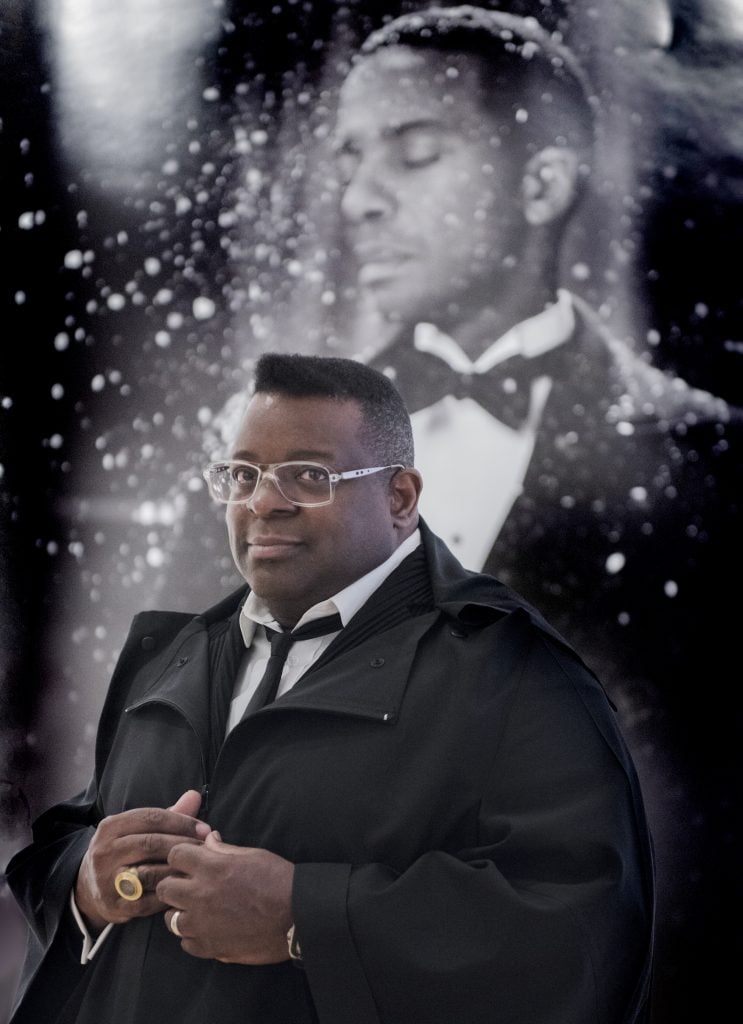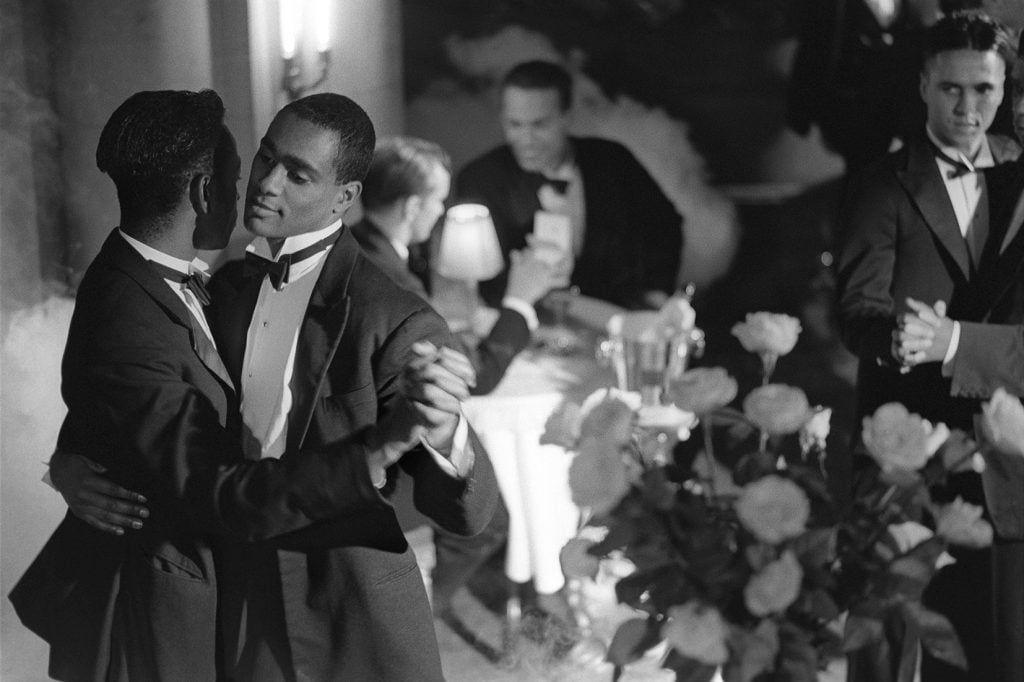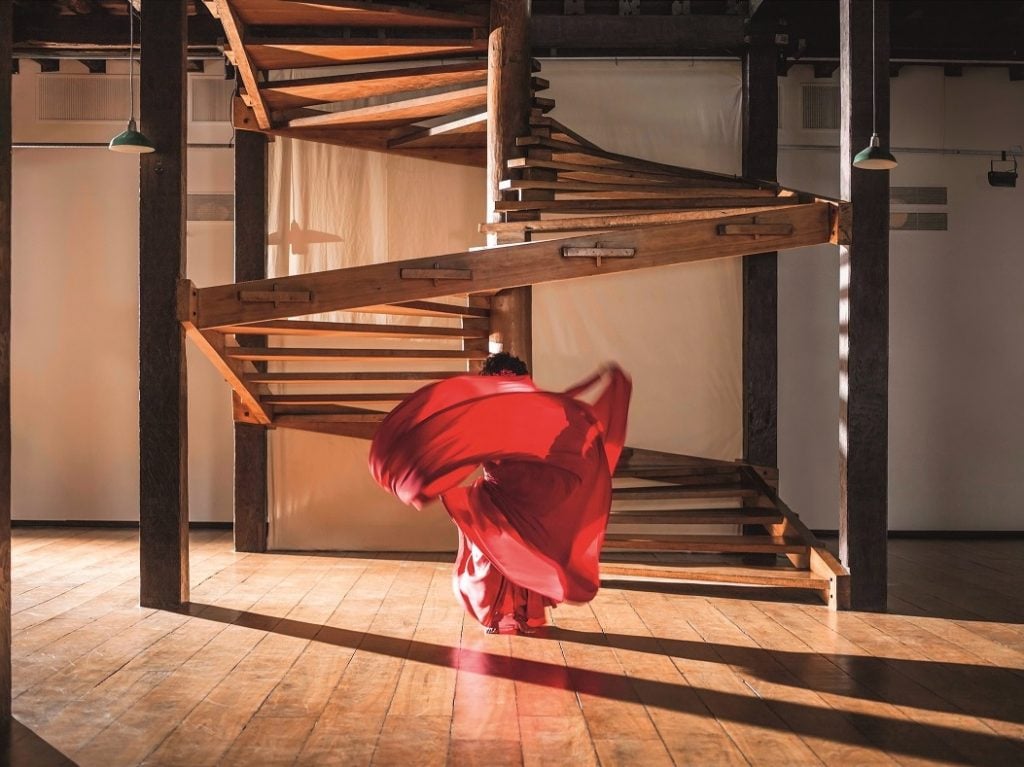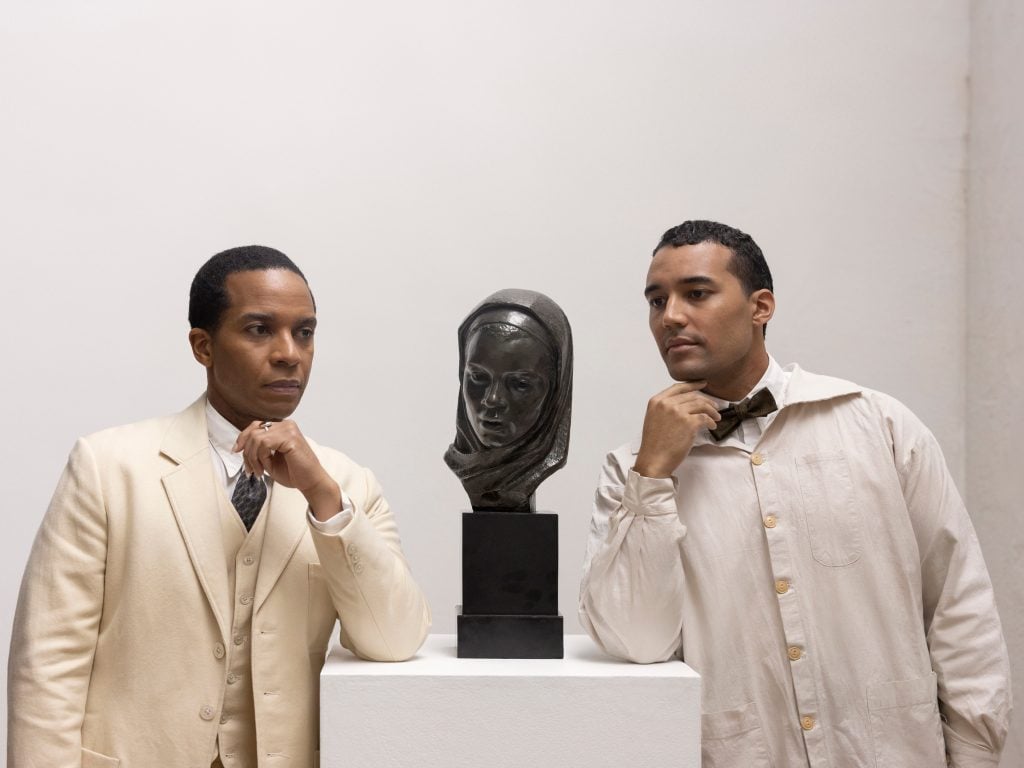People
‘It’s About Bringing Those Absences to Life:’ Isaac Julien on Using the Gaps in Historical Archives As Springboards for Reinvention
The British artist's first major U.K. retrospective is on view at Tate Britain through August 20.

The British artist's first major U.K. retrospective is on view at Tate Britain through August 20.

Precious Adesina

When the British artist Isaac Julien released his 1989 film Looking for Langston, it was the height of the AIDS epidemic that disproportionately affected gay men. But despite undertones of the crisis being present throughout the 40-minute-long black and white video, Julien does not offer viewers a conventional depiction of the pain of the time, instead illustrating the beauty and magnificence of queer (especially Black, gay) relationships. Shots of men dancing, smoking or in moments of desire are interspersed with archival material, including a voiceover of a radio broadcast made after the death of the African American poet, writer and activist Langston Hughes, and readings of poetry by Hughes, Richard Bruce Nugent, James Baldwin, and Essex Hemphill.
Though Looking for Langston is the 63-year-old’s best-known film, Julien was already an integral figure in independent cinema before its release, noted for constantly pushing the boundaries between film and art. Who Killed Colin Roach? (1983) reflected on the death of Colin Roach, a 21-year-old who was fatally shot inside Stoke Newington Police Station in east London in 1983, and Territories (1984) critiqued traditional representations of Black culture, focussing particularly on Notting Hill Carnival. All three films, which exemplify the artist’s ability to fuse fiction and history, are included in the artist’s first major U.K. retrospective, titled “What Freedom Is To Me,” and on view at Tate Britain through August 20.
“When making a work, I like the idea of wearing the research lightly on your sleeve,” Julien told Artnet News, dressed in a ribbed black cardigan, white shirt, and dark skinny tie, at the art museum the afternoon before the opening of his exhibition. Looking for Langston explores the life of Hughes, who died in 1967 and was known for leading the Harlem Renaissance, a Black cultural movement that took place in New York from the late 1910s to the mid-1930s. Rather than presenting a biography or breakdown of who the artist was, Julien provides something that straddles history and fantasy, and attempts to capture the poet’s essence.

Isaac Julien, Pas de Deux with Roses (Looking for Langston Vintage Series) (1989/2016). © Isaac Julien. Courtesy the artist and Victoria Miro
“His work is so incredibly rich,” said Nathan Ladd, co-curator of the exhibition, who has chosen to spotlight a number of pivotal video pieces by Julien from across his 40-year career. “With every work, you enter a world constructed by Julien, and within that world, because of the amount of references and ideas, there’s so much to get out of each one.”
Ladd noted that “the collaging together of sound, archive, fiction, and history” in the films exhibited at Tate provides a deep and multilayered experience, each intentionally offering something that doesn’t sit neatly in a particular place or time.
When discussing his work, Julien particularly references the term “critical fabulation,” coined by Saidiya Hartman, a professor of English and comparative literature at Columbia University. Julien explains that it is the practice of using fictional narratives to fill in the blanks left in the knowledge of a particular time or person. “I think it is a really interesting way of describing the things I’ve been involved in doing for some time,” he said, noting that he has been considering how to utilize gaps in history since the early days of Sankofa Film and Video Collective, a group he co-founded in the 1980s, which was dedicated to developing independent Black film culture until it dissolved in the early 1990s. “I see those spaces [in our understanding of the past] as springboards for reinvention rather than reading them in a negative way,” Julien adds. “It’s about taking the archive and historical figures and bringing those absences to life in a critical way.”

Isaac Julien, O que é um museu? / What is a Museum? (Lina Bo Bardi – A Marvellous Entanglement) (2019). ©Isaac Julien. Courtesy the artist and Victoria Miro.
But Julien’s work does not exclusively examine sexuality and race despite it being a large part of what he has become known for, which is particularly apparent through the pieces selected for “What Freedom Is To Me”. “A lot of the themes in the works are connected to my interests,” Julien said, pointing out two pieces from the show: Lina Bo Bardi—Marvellous Entanglement (2019), which is “looking at architecture through the cultural revolution that the architect Lina Bo Bardi was participating in in Brazil,” and Ten Thousand Waves (2010), which “is a work about Chinese culture.” Julien said he aims to look at these subjects from “a position which is informed by who I am,” adding that “it’s also about the aesthetics and art produced in other places.”
The artist also thinks about how we experience his works, creating active spectators out of his audiences. “Every installation of Julien’s takes on a different kind of spatial dynamic,” the show’s curator, Ladd, noted, adding that they offer “very different viewing experiences” as a result. The most notable example is the use of multiple screens showing different recordings in many of his pieces. The ten screens of Lessons Of The Hour (2019), which delves into the life of abolitionist, freedom fighter, activist and writer Frederick Douglass, is presented in a manner reminiscent of a 19th-century salon hang. “I’m juxtaposing what Douglass is saying about rights and looking at how technology is framing the people trying to fight for those rights,” Julien says. “It alludes to the way in which different screens permeate our culture every day simultaneously—we’re on email, Instagram, Twitter, Facebook.”

Isaac Julien, In the Life (Iolaus), Once Again … (Statues Never Die) (2022). ©Isaac Julien. Courtesy the artist and Victoria Miro.
Once Again… (Statues Never Die) (2022) takes this one step further. “You have space to physically and mobily move around these five screens whilst also encountering sculptural pieces as well as Mylar mirrors on the walls,” Ladd says. Once Again… is also Julien’s most recent piece in the exhibition, which probes the relationship between the American art collector and exhibitor of African material culture, Dr Albert C. Barnes and the philosopher and critic Alain Locke, known as the ‘Father of the Harlem Renaissance’. Thom Collins, president of the Barnes Foundation, an art collection in Philadelphia founded by Dr Barnes in 1922, says that “drawing on Julien’s research in the Barnes archives, Once Again… explores the reciprocal influence” Locke and Dr Barnes had on each other. “It is powerful to see this new film in conversation with his many extraordinary works created over the course of his career.”
“Isaac Julien: What Freedom Is To Me” is on view through August 20 at Tate Britain, London.
More Trending Stories: